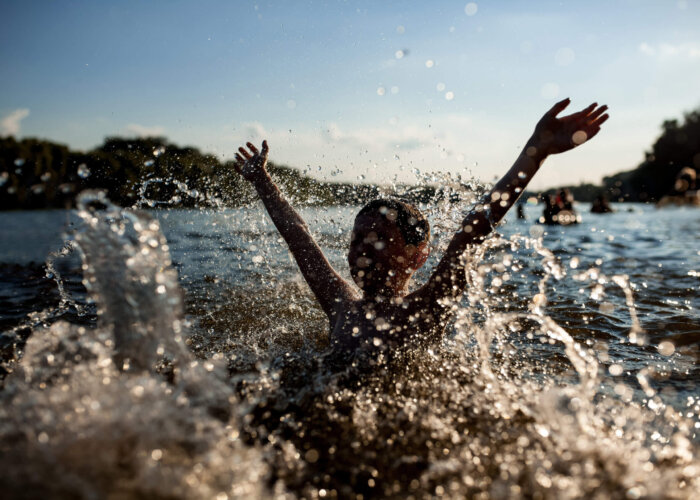Drowning Prevention Week 17th – 24th June 2023

Ensuring Safety for Children
Drowning is a tragedy that can be prevented, yet it claims many lives every year. In the United Kingdom, water-related incidents are a significant concern, especially for children. Understanding the statistics surrounding child deaths and near drownings and taking simple preventive measures can create a safer environment for our young ones. In this blog we look at some of the key points surrounding drownings and the up and coming Drowning Prevention Week.
Unfortunately, a distressing number of children lose their lives to drowning in the UK every year. Recent statistics show that approximately 40 children aged 0-19 years die from drowning annually, making it the leading cause of accidental death among this age group. These incidents occur in various settings, including swimming pools, rivers, lakes, and baths.
Drowning and near-drowning incidents
Furthermore, for every child who dies from drowning, many more experience near-drowning incidents. Near drowning refers to situations where a person survives but requires medical attention or exhibits respiratory distress. The number of near drownings in the UK is challenging to determine, as many cases go unreported or undocumented. Nonetheless, these near-misses serve as a wake-up call, emphasising the need for robust drowning prevention strategies.
“People die and suffer life-changing injuries every day as a result of drowning in the UK. Drowning is among the leading causes of accidental death; about 400 people accidentally drown every year, which equates to one person dying every 20 hours. Some individuals survive drowning events but, many are left with severe, life-changing injuries.” – The UK Drowning Prevention Strategy 2016 – 2026 (National Water Safety Forum)
How can we prevent drownings?
Preventing drowning incidents involves a collective effort from parents, caregivers, and society. By following a few simple steps, we can significantly reduce the risk of such tragedies:
- Supervision – It is important to always supervise children when they are near water. Even if they know how to swim, a responsible adult should be present to watch over them at all times. Make sure to designate someone who can give their full attention to supervising the children during water activities.
- Learn to swim – It’s crucial for children to learn how to swim early on, as it could save their lives. Consider enrolling them in certified swimming lessons with qualified instructors. All children in England should be able to swim 25m by the time they leave school Keep in mind that being a good swimmer doesn’t automatically mean being safe, so make sure to supervise them at all times. Even strong swimmers can drown in unfamiliar bodies of water, like cold quarries or lakes.
- Water Safety Education – Educating children about water safety is essential. Teach them about the dangers of water and the importance of following safety rules. Emphasise the significance of wearing appropriate flotation devices when boating or participating in water sports.
- Secure Pool Areas – If you have a pool at home or if you are looking to book a holiday with accommodation with a pool, ensure it is properly fenced and equipped with self-latching gates. The fence should be at least four feet high and have no footholds for climbing. Install pool alarms or covers for additional safety.
- Water Awareness – Promote water awareness among children by teaching them to recognise warning signs, such as strong currents, deep water, and dangerous areas. Encourage open communication about their concerns and fears related to water.
- First Aid and CPR Training – Obtain first aid and CPR certification, as these skills are vital in responding to a drowning emergency. Being prepared and knowing how to act quickly can make a significant difference in saving a life.
Educational resources for Drowning Prevention Week
The Royal Life Saving Society (RLSS) offers a variety of resources to assist all groups conducting educational sessions for Drowning Prevention Week. These resources are organized into three main categories.
The RLSS has developed a broad range of resources to support different groups in delivering water safety. These are excellent for use in schools, and there are resources from pre-school through to secondary phase.
Children in the UK are at risk of drowning, but there are steps we can take to keep them safe. Understanding the statistics, raising awareness, and implementing preventive measures are crucial. As responsible adults, we need to provide constant supervision, educate children about water safety, and encourage them to develop their swimming skills. By working together, we can create a safer environment for children and prevent tragic accidents. Remember, every action taken towards drowning prevention can make a difference and help build a safer future for our communities.

